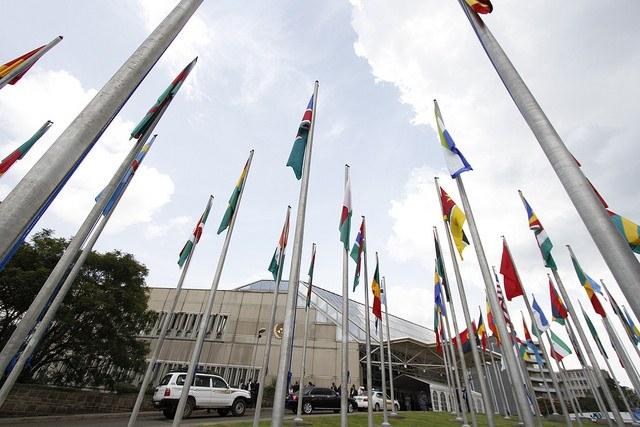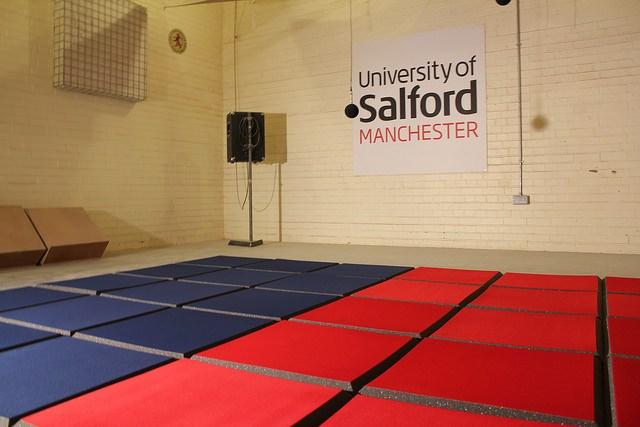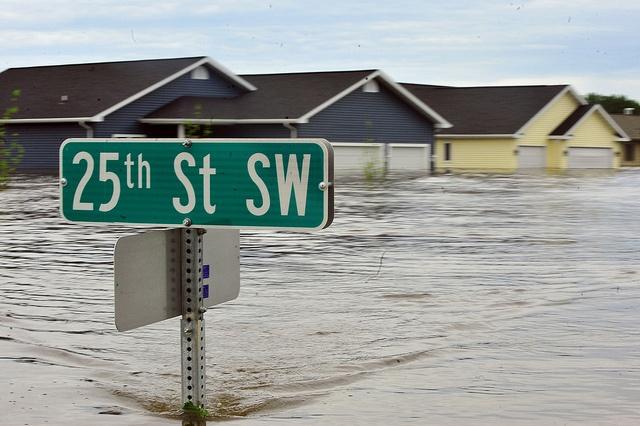Irvine, California: Planning (Indoor) Agriculture for the 21st Century


By Jim Pantaleo
In 1972, I moved to rural Irvine, California, from nearby Huntington Beach, best known as Surf City, USA. At the time, Irvine was the agricultural heart of Orange County in Southern California. I was 7 years old and a resident of one of the new planned communities surrounded by farm land. Along with the fledgling University of California, Irvine, I remember the old General Store (with wood-planked floors and a post office) and a drag racing strip near the El Toro Marine base. In many ways Irvine was bucolic and open and a great place to grow up. Farming was ubiquitous but shrinking before my eyes with each new “coming soon” sign erected on freshly flattened fields -- ready for streets to be carved and foundations to be set.
Most kids were aware of James Irvine and his massive land holdings which stretched many miles throughout Orange County. I was told of lima bean farmer Carl Segerstrom. I learned how there was an attempt to bring the eucalyptus tree to the United States in the 1860s from Australia. Originally it was thought the tree could be used as railroad ties for the Transcontinental Railroad, but when cut, the wood bent and proved ill-suited. The noble tree, however, ended up providing a critical agricultural use for Segerstrom as a wind break for his exposed bean fields … and a most excellent place for a high treehouse for a 12-year-old boy and his older brothers.
Memories of smells remain vivid -- from the fragrance of orange blossoms wafting into my bedroom at night to the not-so-fragrant odor of manure spread upon the fields seemingly once a week. Never mind my community’s park, swimming pool or tennis courts; it was those fields (and irrigation canals) that beckoned to me and became my playground. I loved those fields! It was a true Huck Finn existence, at least as much as one could have in Orange County in the early 1970s.
Those familiar with Irvine today know that it is no longer known for its agriculture. Where strawberries and, yes, orange groves once covered the landscape as far as the eye could see, now an explosion of planned communities and greenbelts reign supreme. Sadly, and by design, the Irvine Co., which has overseen the city’s development since incorporation in 1971, has reserved only 3 percent of city land be dedicated as ‘open space.'
By the time I graduated high school and left for the big City by the Bay, Irvine had an expanding population with scores of communities and miles of bike paths and winding sidewalks. I came full circle 25 years later to discover my city had found a way to get back to its agricultural roots.
Look no further than Urban Produce, the city’s first and only indoor vertical farm run by Ed Horton and his family along with a top team of horticulture professionals. In a large, nondescript warehouse located in an industrial park just a short distance from where I rode horses on the Marine base as a kid, and near the spot where the drag strip was, is the place where some real magic happens.
After researching Urban Produce online, I simply walked in one day in late 2014 with no appointment. The 'farm' had only been in operation for a few months, and the first thing I noticed in the lobby was a large sign welcoming Whole Foods. I knew I was in the right place!
My first tour of the farm was a memorable experience, and Ed could not have been more thorough in his articulation of the plants and processes (while protecting proprietary information). I’m sure my pupils dilated when I saw the floor-to-ceiling serpentine columns bathed in pink light with trays of wheat grass and baby arugula slowly making their way around a system leading through a series of “stations.”
The latter is to provide the necessary timed lighting and nutrient distribution, producing the desired taste profile and maximum yield per square foot. This patented system is called a High Density Vertical Growing System (HDVGS) and is an engineering, automation, LED lighting and plant physiology marvel.
Given my recent journey into the world of Controlled Environment Agriculture, I was pleasantly surprised to find how technology -- both hardware and software, my chosen vocation for the previous 20 years -- is so strongly married with agriculture to grow clean and delicious produce. The baby arugula is out of this world, by the way.
Over the coming months I came to know Ed more personally and his goals for Urban Produce. To say Ed is a pioneer in the ‘field’ of indoor agriculture and vertical farming would be an understatement. With a background in software, he is thoughtful, laughs easily and is generous of time and spirit. I learned he is a man of great faith, and among other charitable work, he pays it forward by supporting local schools (students are brought in for educational “farm tours”). By doing this, Ed is literally planting a seed in the next generation of vertical farmers.
As I’ve aggressively studied this new industry over the past year, without question among national peers Urban Produce has a most compelling vertical farm and operational business model. They are not hobbyists. They are not wistful dreamers. They are dedicated to solving the real challenge of providing fresh, local, healthy produce grown with zero pesticides, 90 percent less water than traditional field farming, and incorporating the highest levels of technology and science-based practices … all while making a profit.
And they are indeed making all the right moves; along with their science and technology investments, the Urban Produce team is establishing solid relationships with top grocers, restaurants and well-positioned produce distributors. They quickly achieved the designation of USDA Certified Organic and have plans for expansion nationwide. The smart money is paying very close attention.
Farming in my hometown is alive and well thanks to Urban Produce!
Image credit: Flickr/Gary Cziko
Jim Pantaleo is a freelance blogger based in Los Angeles. Leaving corporate software licensing in 2014, he shares his journey into indoor agriculture and vertical farming. [email protected].
Building Successful Coalitions for Greater Social Impact


By Daniel Duty
The Alliance for Bangladesh Worker Safety was formed in July 2013 to raise safety levels in the ready-made garment industry. In that time it has inspected over 600 factories and trained over a million workers with measurable outcomes. It closed unsafe factories and is leading remediation of many more. It is collaborating with partners to increase government capacity and has provided access to tested and approved safety equipment, while lowering costs to owners. This success can be attributed to forming the Alliance under several key principles for success that should be applied to any initiative designed for collective impact.
Spring 2013: I landed in New York early in the morning to meet with North American apparel buyers and retailers. After several incidences of garment factories in Bangladesh going up in flames and killing hundreds, the Rana Plaza factory had collapsed due to poor construction, killing thousands more. Civil society was outraged and Western companies took the brunt of the criticism, even if a flawed Bangladeshi inspection and enforcement regime might be at the core of the problem.
No matter. Western companies had a complex problem on their hands. They liked doing business in Bangladesh because of the high quality of goods at low prices. Their reputations, however, were at severe risk by staying in Bangladesh as more factories would certainly have problems and the safety issues were extensive. But pulling out would be met with more criticism for abandoning the country and the only means for many women (who make up 80 percent of garment workers) to support their families and learn new skills. The cost of fixing the safety issues might be astronomical and some factory owners could be resistant to change. The Bangladeshi government did not posses the capacity, will or means to fix the issues, and the U.S. government was imposing trade sanctions. Finally, international unions were eyeing this as an opportunity to organize workers to make demands on wages and other labor issues around the world and had backing on Capitol Hill.
The situation was, no doubt, complex. However, it also served as time for Western corporations to demonstrate their values and the importance of investing in the communities in which they operate.
When I arrived at my first meeting in New York, I sat down at a long conference table amongst my peers from at least 15 major retail and apparel manufacturing companies, including Walmart, Gap, Li & Fung, the Children’s Place and others. I was representing Target as its VP of global affairs. The goal of the discussions was to determine how Western corporations should respond and assess what action we could take to begin improving the standards of safety in Bangladesh apparel factories. Several of these companies had just returned from Europe, where they had failed to reach an agreement with a safety accord that was forming between mostly European retailers and international trade unions. While legal aspects of the accord were troublesome for North American companies, it was the potential for misalignment of goals, strategies and priorities that would also contribute to formation of an alternative alliance.
Any successful coalition seeking to make true impact must have clear alignment on its goal and strategies. While a grand coalition between governments, factory owners, NGOs, buyers and retailers first seemed to be the easiest and quickest approach, the relevant parties were ultimately guided by different interests, needs and priorities. Consequently, that morning in New York only retailers and buyers (and their trade associations) were invited to attend. While there was recognition that others would be important partners, it was imperative to first determine whether this group of historic competitors could align their own interests and needs.
After much discussion and debate, the group settled on one clear goal that all could support: meaningfully raise the level of safety in Bangladeshi ready-made garment factories . . . nothing more, nothing less. This commitment and clarity of purpose has served the Alliance well over the last two years as it accomplished key milestones in record time. Agreement was also reached on the core strategies that would support the goal, from conducting immediate inspections, transparency, worker training, remediation and capacity building. While others sectors have tried to push the Alliance to address additional issues like supporting hospitals, increasing minimum wages and forming unions, the Alliance has stayed laser-focused on its goal.
In addition to aligning goals and strategies, it is important that coalition members agree to success measures. In subsequent meetings the Alliance members agreed to a number of key performance indicators to measure progress towards its goal. This has allowed the Alliance to know what is working well and quickly pivot tactics where more attention might be needed. Also, each coalition member and other stakeholders can review progress and hold the coalition accountable, increasing the likelihood of success.
While it is important to build the coalition among parties with aligned interests, it is also important to form strong partnerships with other entities having related or compatible interests key to solving the issue at hand. In Bangladesh, the Alliance has formed strong partnerships with the US, European and Bangladeshi governments, NGOs, trade associations and local labor leaders. A plan was developed early on to coordinate and participate in activities that would maximize the end result. These additional parties have enhanced the discussion by bringing new ideas, challenging assumptions, and helping implement solutions. For example, an Alliance partnership with the NGO Phulki, led to creation of a help line that is a reliable, responsive channel through which workers can report imminent risks to health and safety.
Open and transparent communications between all coalition members is also imperative. Often times, coalitions break down when one or several members feel out of the loop or are missing information. This becomes especially difficult with large coalitions having many members. Early on, some Alliance members expressed frustration over a perceived lack of information sharing. Knowing this could lead to false assumptions, misplaced accusations and other problems, the Alliance quickly created several communications vehicles that ranged from regular one on one calls with members, to monthly e-updates and regular all member meetings where member input could be gathered and questions asked. This has resulted in continued alignment within the coalition and an absence of infighting often experienced by other coalitions.
Finally, it is important that coalitions build a strong organizational infrastructure to support its efforts and members. While coalition members will have the best intentions to devote the time necessary to make a coalition work, other distractions come easily. At an early Alliance Board meeting in Chicago, we agreed to put an organization in place to coordinate all aspects of the initiative – everything from hiring the right staff with the right expertise to developing a communications strategy and managing member relationships. The Alliance looked at many possibilities and angles, but ultimately decided on a structure that allowed a presence in Bangladesh so we could truly have a local presence, as well as one based in Washington, D.C. to appropriately represent the interests of our North American coalition. Many unexpected issues arise in the course of carrying out a coalition’s purpose and details can be crucial. The Alliance has successfully addressed these by having a strong infrastructure to run the coalition day-to-day.
Without tight alignment, a coalition approach is problematic. Indeed, coalitions with competing interests often leads to a slowdown in their ability to drive consensus and make progress, at best, and conflict and infighting leading to complete paralyses and dissolution of the coalition, at worst. The investment in solving large, complex issues and the dire need for solutions is too great to waste time with dysfunctional or ineffective coalitions.
Looking back over the last two years, it is clear that success in raising safety standards in Bangladesh has thus far stemmed from that morning in New York where we created the right coalition of partners with tight alignment around a goal and strategies. It has included agreement on measurements of success, finding the right partners to complement the work, open and transparent communication and a strong supporting organization. With these fundamentals, the Alliance and other like-minded coalitions can and will make real social impact for the betterment of all.
Image curtsey of the Alliance for Bangladesh Worker Safety
Daniel Duty was Target’s Vice President of Global Affairs at the formation of the Alliance and served on the Alliance governing Board. He is the founder and CEO of Conlego, a consulting firm helping organizations make greater social impact through innovative strategies and problem-solving partnerships and coalitions. He can be reached at [email protected] and @danielduty3.
Change your diet and save the planet!


Climates, a start-up social network, is calling on people to go 'Climatarian' for their health and the planet.
Switching to a climatarian diet can save a tonne of CO2 a year- the equivalent of three return short-haul flights or driving 3.500 miles a year - and you don't have to give up meat, says Climates.
The new network says replacing beef and lamb with pork or chicken in everyday meals can make a big difference.
"Beef and lamb have about five times more climate impact than pork and poultry," says Biba Hartigan, founder of Climates.
"Food overall causes up to 30% of all greenhouse gas emissions so this simple change can have a big impact - and cutting down on red meat is good for your health too.”
Climates is currently crowdfunding to get the network off the ground.
Picture credit: © Lostarts | Dreamstime.com - Pigs Photo
Beyond the PDF: 5 Tips to Leverage CSR Reports for Greatest ROI


By Judy Sandford
With three-quarters of S&P 500 companies creating corporate social responsibility (CSR) reports, most major businesses recognize it is a “must-do” communications strategy. However, the return on this sometimes significant investment is falling short. New research shows only 17 percent of Americans said they have read a CSR report in the last 12 months, according to the 2015 Cone Communications/Ebiquity Global CSR Study.
Although CSR reports were originally designed to meet the demands for transparency among investors and key influencers, resulting in dense 100-page PDFs, the marketplace has dramatically shifted. Consumers, too, want to know how organizations are stacking up against promises. In fact, 82 percent of Americans expect companies to report on the progress of their social and environmental efforts. To meet the need of growingly diverse audiences, it’s time for CSR executives to think beyond the PDF.
Companies have the opportunity to bring new life to this valuable data, innovate existing report formats and leverage content for greatest engagement. Americans feel briefly written summaries (42 percent), interactive websites (36 percent) and videos (29 percent) are more effective than a comprehensive written report (18 percent). These preferred formats signal the broader challenge for companies to make their CSR data more accessible, dynamic and compelling to secure a larger return on investment.
To help companies think about how to get more mileage out both current and future CSR reports, here are five tips, insights and examples of companies that are bringing CSR reporting content to new levels:
1. Innovate formats
CSR content should take many forms -- a long-form report is just one execution.
Turn CSR data and metrics into infographics or social media “badges,” transform static stakeholder quotes into videos, or build a custom app for your sales teams to share CSR commitments on the road.
This year, EMC* got right to the good stuff by issuing an Executive Report, providing quick snapshots of commitments with hyperlinks to more detailed information, videos and white papers so those interested could explore even further.
Campbell’s 2015 Update of the Corporate Social Responsibility Report takes the form of an interactive website; readers can scroll through different pillars, hover over icons to reveal more information, read through pop-up testimonials from Campbell’s employees, or scan through more detailed information via toolbars and tab menus.
2. Tell more stories
Although CSR reports are typically chock-full of data and figures, it’s important to balance these metrics with the amazing stories behind successes and progress. In fact, 66 percent of Americans believe a combination of both numbers and/or data and stories of impact are equally important when learning of a company’s CSR commitment or results.
Target’s* new Corporate Social Responsibility Report allows individuals to customize the report and zero-in on the areas that are most important to them. The report is highly visual with extensive use of photography and quotes from partners, employees and nonprofits to highlight the select stories behind the metrics. Stakeholders who want to dig a little deeper can view the GRI Index section of Target’s customized report or check out the 2014 Goals & Progress section of the Corporate Responsibility website.
3. Build for fun, interaction and ease
Don’t let your reader’s eyes glaze over from too many static charts and pages of text. Americans want an engaging and uncomplicated experience, whether that’s achieved through a dynamic website or simplified look and feel.
GM’s report puts readers right in the driver’s seat with a fun, animated introduction to its 2014 Sustainability Report, highlighting the pillars the report will focus on. Johnson & Johnson** built its report for easy navigation by creating a color-coded traveling toolbar; as you scan through the report, the toolbar follows, making it even easier to jump between sections.
Unilever’s Sustainable Living website takes readers on a virtual journey complete with videos, images and eye-catching graphics on the company’s commitments.
4. Get social
Americans spend more time on social media than any other major Internet activity, including email. So make your CSR reports part of the social experience.
Go beyond slapping a Facebook icon at the top of your webpage, and build social components right into your report. Encourage and enable readers to share data points, information on commitments and more as they read – pre-populate posts for an even easier social sharing experience. Empower consumers to do more than push out content and give them a way to voice their own opinions and engage in a real-time dialogue.
For its part, EMC* included a “contact the board” link right in its Governance Detailed Report to facilitate real-time feedback right to decision makers.
Make it 365
In today’s world, things can change in hours or even minutes, so don’t wait an entire year to talk about your company’s CSR progress. Companies can report in real-time by pulsing out information throughout the year, especially around major milestones. Think of CSR reports as turn-key content calendars; create a plan for the entire year while also responding in the moment to news or developments.
Coca-Cola’s Sustainability site updates in real-time as commitments and partnerships evolve, and stakeholders can find new information here throughout the year, in addition to the annual Sustainability Report.
Dow has gone beyond the once-a-year reporting cycle by issuing quarterly reports. The progress reports highlight each of Dow’s CSR pillars with new stories and focus areas while also providing updates on goals through charts and metrics.
While “report season” as we know it may be coming to a close, the potential of CSR reporting is just getting started. Companies can achieve maximum return and cement stronger relationships by leveraging content throughout the year and engaging stakeholders along the way.
*Cone CSR reporting client
** Cone client on other projects
Image credit: Unsplash via Pixabay
Judy Sandford is the vice president of Cone Communications' CSR practice.
5 Ways to Bring Out the Best in Your Team


Editor's Note: This post originally appeared on Unreasonable.is.
By Teju Ravilochan
Earlier this year, I met with members of the board here at the Unreasonable Institute to get their advice on how I could improve as CEO. Jane Miller, who has served on our board for three years and has been extremely close to our whole team, gave me some of the best advice I’ve ever gotten: “You’re intelligent. But your job is not to be the smartest person in the room. It’s to bring out the best in your team.” She explained to me, as she’d observed in some team meetings, that I sometimes crowd out the voices of others on the team.
This advice resonated deeply because, one, I want to be a leader that brings out the best in my team, and, two, I know her observation is true. This is the No. 1 thing I need to work on as a leader.
So, I have set out to investigate how to bring out the best in other people and how to embrace that directive as my primary mission this year. Here’s what I’ve learned:
1. Care deeply about your teammates
Knowing the range of someone’s strengths and abilities and having the ability to believe in them comes from having a deep understanding of them. And that understanding can only be achieved through sincere curiosity about what drives them, what they are interested in, and what they believe they can do. Having this space comes from asking them questions, usually in one-on-one settings.
2. Believe your team is highly capable
This Harvard Business Review article examines the difference between “diminishers” — leaders who believe that they have all the answers and stifle their teams — and “multipliers” — leaders who truly bring out the best in their teams.The No. 1 difference between the two types of leaders is a simple belief. Diminishers believe “no one else really has much to offer.” They see talent as static and unchanging. Multipliers, on the other hand, view things differently. From the article:
"The critical question for these leaders is not 'Is this person smart?' but rather 'In what ways is this person smart?' The job, as the multiplier sees it, is to bring the right people together in an environment that unleashes their best thinking — and then stay out of the way."
Multipliers might ask diminishers, “If you don’t believe your team is more capable than you at their job, why did you bring them onto your team?”
3. View your job as an editor, not a reporter
Jack Dorsey, Twitter founder and Square CEO, famously describes the role of the CEO as an editor. An editor doesn’t write the stories published in a newspaper, but rather puts together the vision for the paper, encourages reporters to pursue certain stories and holds all stories to standards of excellence.
In the past, I saw my job as the “first reporter.” Whenever we encountered a problem, I saw it as my responsibility to solve it first then delegate the execution of my solution to others. That doesn’t work too well because:
- I don’t always have the best solutions (particularly as the organization grows).
- My teammates aren’t always bought in to my way of doing things, especially because they haven’t had a chance to contribute solutions.
- The organization is severely limited by my capacity to take on the problems we face.
Instead, I’ve been learning that my job is to frame, invite and equip. In other words, I’ve got to offer critical context including:
- Who we are as an organization (our culture, our values, our identity)?
- Where we are going (our mission, vision and core strategy)?
- What is the problem facing us at the moment and why is important to address?
With this framing in place, I can invite a member of my team to tackle the problem by saying: “From our conversations, I know this is something you care about and have a lot of insight into. How would you go about solving this problem?”
Once they lay out their proposed strategy, I can then offer any thoughts and then ask: “Would you be willing to take on solving this challenge? If so, how can I support you?”
My main job then becomes resourcing them with information, capital, decision-making authority, or whatever else they require.
4. Take a leap of faith
Doing the above often requires giving teammates license they haven’t previously had or giving them a task they haven’t proven they can do yet. That’s perpetually your job as CEO. You want people who punch above their weight class on your team anyway. That means trusting them with things you don’t know they can do yet, reserving judgment and then giving them honest feedback (hence, the next point).
5. Give feedback, especially about their impact on the organization
People on my team always appreciate honest feedback because they genuinely care about making Unreasonable Institute as successful as possible. But I’ve found that giving honest feedback can often be a challenge for me. Buffer lays out incredible principles for giving great feedback in this blog post.
But giving feedback isn’t only about laying out how people can be better. It is more about helping teammates understand how their contributions are driving the organization forward and contributing to the strategy and mission of the organization. As Adam Grant lays out in his book "Give and Take" (perhaps my all-time favorite business book), giving people are motivated primarily by seeing their effort translate into meaningful outcomes in service of a cause they care about.
I’m still learning tremendous amounts about what it takes to bring out the best in other people. But Jane Miller is right: That’s my No. 1 job. And as a leader, I’m guessing it’s probably your No. 1 job too.
Image credit: MeganY via Pixabay
Teju Ravilochan is co-founder and CEO of the Unreasonable Institute. He is driven by the desire to live in a world where every human being can be the master of their own fate, unbound by the chains of poverty, oppression, or injustice.
From Addis Ababa: Sustainable Development Goals Within Reach


By Teresa Fogelberg
This is an exciting year for sustainability policy across the globe. 2015 will see the creation of the U.S. government’s National Action Plan for Responsible Business Conduct, as well as Chile introducing a reporting requirement for large companies, a step the EU took last year. This is also the year of international sustainability summits: In September, heads of state will agree on Sustainable Development Goals (SDGs) for the next 15 years, and in December world leaders hope to forge a binding climate deal at COP (aka Conference of Parties) 21.
Most people who stay abreast of sustainability issues are aware of the SDGs and the COP summit, but they may be unaware of the crucially important meeting taking place right now in Ethiopia. The third International Conference on Financing Development has received relatively little attention despite its importance in terms of creating a global funding structure for sustainable development efforts. I’m currently in Addis Ababa, Ethiopia, for the conference and have the privilege of speaking about sustainability reporting as an essential tool for enabling financial flows to developing countries, as well as how the reporting process helps companies draw sustainability into core business practices.
I’m hopeful more and more businesses and governments will recognize the following truth: Sustainability reporting is one of the best ways that businesses can demonstrate their commitment advancing sustainable development.
Why do I believe this to be true?
Well, there are two obvious reasons. First, sustainability reporting is a key part of these emerging national policies and international agreements. Currently, 29 national or regional authorities use GRI in their sustainability policies and look to us for guidance as the world’s most trusted and widely used sustainability reporting standards. Second, sustainability reporting helps governments and citizens to get a grip on what businesses are doing, while giving businesses a platform to share progress in a transparent way. A classic win-win.
But the list doesn’t end there.
You may not know them but here are three other reasons why sustainability reporting can play a key role in enabling green growth, for businesses and governments.
1. Transparency builds trust
Building and maintaining trust is essential for businesses and governments. Trust is necessary for well-functioning markets and to legitimize government activities. When stakeholders such as investors, customers, employees or even citizens lose trust, organizations can lose everything.
So, how do stakeholders decide whether an organization can be trusted? They do so based on the information they have at hand. And in this day and age we know that financial information alone isn’t enough. The value of the sustainability reporting process is that it ensures that organizations understand, manage and communicate their impacts on issues such as climate change, human rights, corruption and many others. But in order to build trust with all of the groups affected by operations, a multi-stakeholder approach, which brings all stakeholders to the table, is needed.
GRI’s sustainability reporting process incorporates such an approach. This enables engagement with all stakeholders to help identify important issues and support better decision making.
2. Supporting sustainable investment
Governments in the developed world spend billions of dollars each year to promote sustainability and inclusive growth in developing countries. Often this spending is aimed at addressing specific issues such as water use, land use and gender equality. These governments want a tangible indication and confidence that the organizations set to receive development aid are serious about sustainability. I have a simple suggestion: Make sure that those businesses and governmental institutions receiving development aid have, at a minimum, adopted the sustainability reporting process and are making improvements on their impacts.
3. Helping businesses contribute
Finally, here’s a question you may not have considered: How can businesses contribute to national and international goals if they don’t know their impacts?
Well … obviously they can’t.
This is where sustainability reporting also comes into play, helping businesses understand and communicate their impacts on critical issues, and align decision making with policy goals. And at GRI we’re even taking this a step further. We’re working together with WBCSD and the U.N. Global Compact to develop specific guidance for businesses on the SDGs. We’ll be on the ground at both the U.N. Summit on the post-2015 development agenda in September, and COP 21 in December, to talk about SDG reporting and climate change reporting.
And all this week, I am here at the International Conference on Financing Development in Addis Ababa to help place sustainability reporting at the heart of the responsible business conduct agenda.
Image credit: UNECA via Flickr
Teresa Fogelberg is GRI’s Deputy Chief Executive and heads the Government Relations, International Organizations, Development and Advocacy Team, which works to enable smart policy on sustainability around the world. This includes engaging with capital markets, national regulators, governments, the United Nations and other international organizations. GRI is an international independent organization that helps businesses, governments and other organizations understand and communicate the impacts of business on critical sustainability issues such as climate change, human rights, corruption and many others.
Acoustic Foams -- Sustainable or No?


By Randolph Hoover
When in the comfort of home, many of us have heard noise coming from the street outside or from the loud volume of television programs from our neighbors. The opposite may be true; neighbors complain about the barking of your dog that interrupts their sleep at night. This is because sound vibrations naturally pass through air — and walls. Different frequencies of noise enter and exit our premises, and we can obstruct these sound waves by constructing a soundproof room with the right acoustic foam.
In some places, especially when there are environmental concerns in the area, home theaters, manufacturing facilities, schools, churches, synagogues and temples, equipment warehouses, corporate offices, gymnasiums, and auditoriums are already required to install acoustic foams, and this is planned as early as in the construction phase of the project. In this article, we will get to know more about acoustic foams including pros and cons.
Pro: Reduce noise pollution
Just like light, sound waves can pass through even the smallest hole or opening in holes, walls, or any material. Acoustic foams are installed to reduce noise pollution as they remove echoes and background sounds not by blocking the sound but by absorbing it. Acoustic foams are used to control the reverberation sounds make and this is quite different from soundproofing.
Pro: Enhance sound quality
Acoustic foams are cut in tiles with pyramid or wedge shapes. They work not only to absorb sounds, but also to enhance the quality of sound and speech in a room. Dealing with both mid and high frequencies at the same time, acoustic foam can also be counted as a type of cost-friendly heat reduction facility that is placed in corners of the room or wherever optimal sound mixes are needed as bass traps to minimize sound echoes.
Reducing the amplitude of the waves, acoustic foams dissipate the sound energy as heat. To enhance this effect, there must a good measure of air gap between the foam panels and the walls. This uncovers a wider surface area of the foam panels to incident waves thereby expanding the amount of absorption.
Pro: Improve room’s design
Most homeowners consider acoustic foams for their music studio or work areas so they can have more privacy and concentration in doing their task or craft. Acoustic foam is made from open cell polyurethane foam, and this can provide better aesthetics looks when it comes to room designs.
There are a variety of colors and textures of acoustic foam and you may want to incorporate the theme to your home’s interior design. Some people choose to apply a contour effect to add sophistication and elegance in the room. In addition, acoustic foams also are available in different sizes and thickness and these can be attached to walls, ceilings, doors and other features of a room.
Con: Fire properties
One drawback of using acoustic foam is that it has fire properties. Because acoustic panel is composed of mainly polyurethane, it releases a high smoke level when burned. Hence, this material may not be safe for occurrence of fire.
Con: Not effective when incorrectly placed
Another disadvantage is when acoustic foam is not placed right or when a gap is left unsealed. Often homeowners decide to follow basic instructions per online guide and check that all acoustic panels are covering the gaps or opening around the door completely, but this may not be enough. When incorrectly placed, acoustic foam does not absorb much sound and it tends to just bounce or reflect back the sound waves from one wall to another. Hiring professionals to do it can guarantee that acoustic foams will work to its full ability.
Conclusion
Before designing a room, it is important not only to look after the leaks, flooring, wall paint, ceiling height, and many of the fixtures. To treat and control sound coming in and out of the room, you know that setting up curtains is not the brightest idea. Rather, installing acoustic foams that attenuate airborne sound waves should be part of the plan from the start to effectively eliminate resonance within the room. It is an inexpensive way to soundproof the walls or decrease the volume of desired area in your home.
Image credit: Flickr/Trevor Cox
Randolph Hoover and his family were originally from San Diego California but he is currently studying Business Administration in Umea University in Sweden. While shuffling his work being a Business major, he helps his parents with constant home maintenance in their home in Umea. His main interests is mainly home improvement and car maintenance. When he's not busy, he writes articles about health, his experiences with his father's business and lifestyle, and spends quality time with his family and friends.
IBE issues guidance on new role for internal audit


A new Board Briefing, published by the Institute of Business Ethics, sets out the role of internal audit in advising boards on whether a company is living up to its ethical values.
The financial crisis and a series of scandals at non-financial companies have prompted regulators and investors to focus on culture as a significant risk to corporate health. Boards, too, are increasingly concerned to embed a sound corporate culture to protect and enhance their company’s ability to generate sustainable value.
Checking Culture: a new role for internal audit draws on the experience of those involved at senior level in six companies representing a wide range of sectors and sizes. Audit Committee chairs, heads of internal audit and heads of ethics and compliance recount in their own words how they have approached the challenge of checking culture. It includes interviews with Mike Ashley, Chairman, Board Audit Committee, Barclays Bank, Scott Strachan, Global Head of Internal Audit, Aberdeen Asset Management and Alyson Corrigan, Director of Ethics, Tate & Lyle, among others.
Peter Montagnon, IBE’s associate director and author of the report, said: “Culture and values matter to companies because they help determine how risky they are and how successful they will be in the long term. It therefore follows that boards need to know whether the culture they want is the one they have actually got.
This IBE Board Briefing opens up the debate and enables people to talk about what they are doing and what they have achieved and where the difficulties are, so the business community as a whole can benefit from their experience.”
Philippa Foster Back CBE, IBE’s director commented: “There is still a long way to go before companies and internal auditors take on board the opportunities as well as the risks inherent in the way companies build and embed their ethical culture. This IBE Board Briefing should be of practical help to others, as it shows that much can and is being done.”
Why We're All a Part of the Green Electronics Conversation


By Jonas Allen
Have you ever seen one of those signs in your office encouraging you to recycle electronics? It exists for good reason: In 2014 alone, 41.8 million metric tons of e-waste was shipped to developing countries, posing an immense risk to environmental and human health. Electronics are evolving at a blistering pace, and device lifespans are shortening. Combine those with an exponential increase in global demand, and it can seem impossible to reverse the trend.
Fortunately, experts from around the world are already thinking holistically about these issues, and working to develop innovative solutions. Those experts will gather in September at the Emerging Green Conference to discuss ways to ensure that electronics are key contributors to the circular economy, rather than prime examples of how not to design a product ecosystem.
From material sourcing and production to recovery and recycling, stakeholders in the electronics space embraced the concept of a circular economy years before it was fashionable. Recycling gets most of the attention, in part because it’s a tangible activity in which we can all engage.
“Properly recycling all old and unwanted items here in the United States is crucially important for so many reasons,” says John Shegerian, chairman and CEO of Electronic Recyclers International (ERI). “Our digital security, our environment and the reliability of the new devices we purchase – all rest in the balance of us recycling the right way."
Mr. Shegerian is right. Yet well before companies like ERI and Arrow recycle those devices, well before end-users approach that recycling sign in the office, manufacturers make hundreds of choices that play a critical role in a product’s environmental performance. If users of electronics are to be true advocates for a circular economy, it’s time to take note of those decisions and engage in the conversation. After all, the outcome affects us all.
Recovering precious metals and critical minerals ensures those resources will be there for future generations. Reducing water use during manufacturing can alleviate the strain on drought-ravaged regions. Designing for energy efficiency saves end-users money, and reducing greenhouse gas emissions improves overall air quality and can help stave off global warming impacts. The greening of electronics touches every point in the supply chain, and it involves every entity that plays a role in the lifecycle of an electronic device.
At the Green Electronics Council, we understand that different organizations have different priorities – environmental stewardship, resource conservation, financial savings and technological innovation, to name a few. We engage with all of these groups, because all of us share an ultimate goal: to improve the sustainability of an industry that’s so critical to our everyday lives.
For example, consider your mobile phone. It’s probably on your desk or in your hand at this very moment. Every day, U.S. consumers dispose of enough cell phones to cover 50 football fields. The good news? Manufacturers, NGOs and major wireless carriers have already shown great desire to collaborate on an environmental standard that establishes a benchmark for more sustainable mobile phones.
“Precisely because the volume of [the mobile phone] market has true potential to drive huge positive impact in the environmental space, environmental standards against which to evaluate purchases of these devices are critical,” says Donald Mayer, global sales and business development manager at UL Environment.
But why create a standard? Why develop an environmental rating system like EPEAT? Because environmental standards developed by a diverse group of stakeholders give manufacturers and brands a map for sustainable development and provide consumers confidence in those environmental claims.
“Although there is an emerging ambition to produce and consume greener electronics, vague, misleading and even falsified claims have clouded the picture,” says Fallight Xu, the global head of green solutions at TÜV Rheinland. “Third-party verification of environmental claims provides a clear, accurate, relevant and robust message and enhances the movement's credibility.”
These industry leaders and others will, in September, explore the critical next steps to have electronics cement their role in a circular economy.
We invite anyone with an interest in the greening of electronics to join us for the Emerging Green Conference to hear from experts in the field, share best practices, address emerging issues and productively push each other to do more. The discussions at Emerging Green will help shape the global efforts to create a healthier planet, one in which electronics are key contributors to that outcome.
Image credit: Christopher Ivanov/Unsplash
Jonas Allen is Director of Marketing for the Green Electronics Council.
White House Invests in Climate Change Resilience


Climate change is real, despite what some Republican politicians might tell you. And some regions and communities in the U.S. are already feeling the impacts of climate change. Unfortunately, climate change most impacts low-income communities. As the International Institute for Environment and Development, put it, “Those who are most vulnerable to the adverse impacts of climate change are generally the poorest people and communities in every country.”
The Obama administration recently announced actions to make vulnerable communities more resilient to the impacts of climate change. The actions include over $25 million in private and public investments. Part of Obama’s Climate Action Plan established the State, Local, and Tribal Leaders Task Force on Climate Preparedness and Resilience in 2013. The purpose of the task force is to help the federal government figure out how to respond to the needs of the communities already dealing with climate change impacts.
The task force emphasized the importance of supporting vulnerable communities like low-income, tribal and communities of color. Obama administration released a progress report this month highlighting the actions taken that support the task force’s recommendations.
Here is a highlight of the actions:
- Resilience AmeriCorps Pilot Program. The Resilience AmeriCorps Pilot Program will recruit, train and embed AmeriCorps VISTA members in up to 12 communities in 2015. The two-year pilot program is established in partnership with the Corporation for National and Community Service, the Department of Energy, the Environmental Protection Agency, the National Oceanic and Atmospheric Administration, and the The Rockefeller Foundation and Cities of Service. Members of AmeriCorps VISTA -- or Volunteers in Service To America -- will help vulnerable communities develop plans to become more resilient to climate change impacts.
- Helping tribes prepare for climate impacts. The Department of the Interior’s Bureau of Indian Affairs announced an $11.8 million grant to support tribes in planning for climate change impacts. The grant will support over 104 awards addressing tribal efforts for training, providing technical assistance and capacity-building needs.
- Conducting a climate adaptation, preparedness and resilience seminar. Working with the Obama administration and federal agencies, the National Exercise Division of the Federal Emergency Management Agency (FEMA) is designing and conducting a seminar series that gives the knowledge and tools communities need to address climate change impacts. The first pilot seminar will be held in the Miami area in mid-August.
- Increasing energy security in Native American tribes. The Department of Energy announced that five Native American tribes are receiving support from the department’s Strategic Technical Assistance Response Team (START) Program. The 2015 projects include validating the economics of a proposed microgrid, helping to determine the best way to transport renewable energy to tribal consumers, and better understanding the economics of expanding the use of renewable energy on tribal lands.
Is it enough?
Are the actions the Obama administration is taking enough? The Union of Concerned Scientists (UCS) doesn’t seem to think so. In a blog post last week, the UCS recommended that Congress "step up and designate a National Resilience Fund, perhaps paid for through a price on carbon, to help prepare and protect communities."
Indeed, Congress should step up and designate a National Resilience Fund, but that has a snow ball's chance in hell of happening with the Republicans in control of both congressional houses. Back in January, Sen. Lisa Murkowski (R-Alaska), chair of the Senate Energy and Natural Resources Committee said that while she believes the climate is changing, she does not “agree that all the changes are necessarily due solely to human activity.”
Perhaps it is time for the American people to take climate change so seriously that they vote into office congressional members who not only believe it is occurring, but will do something to prepare our communities to deal with its impacts.
Image credit: Flickr/DVIDSHUB